Maintaining a crystal-clear pool requires understanding the intricacies of pool equipment, and the sand filter is one of the most vital components in this equation.
Over time, as the filter collects debris and impurities, it becomes essential to refresh its filtering capabilities. This involves the process of backwashing.
In this post, we will guide you through the step-by-step procedure for backwashing a sand filter, ensuring your pool remains in pristine condition and your filter operates at peak efficiency.


How to Backwash a Sand Filter? Backwashing a sand filter is a simple, straightforward process that involves switching the pool sand filter’s filter valve setting to “Backwash” and then running the pool pump for a few minutes. This reverses the water flow in the filter, flushing the dirt out of the sand and discharges it through the water outlet.
How to backwash a sand filter – step by step guide
If you have a pool and want to ensure its optimal functionality, understanding how to backwash a pool filter is essential. Backwashing your pool filter helps remove debris and contaminants that accumulate in the sand filter over time.
To effectively backwash a sand filter, follow these simple steps:
1 – Run out the backwash hose
If your pool drains into your garden, yard, etc., and you have a backwash hose attached to the drain pipe, roll it out and position the end where you want the water to run. You can buy backwash hoses quite cheaply on Amazon.
If your pool drains directly into the sewer, then disregard this step.
2 – Open the waste valve

If you have a valve on the waste pipe, open it so the water can flow out once you start backwashing.
Again, skip this step if you don’t have a valve on the waste exit pipe.
3 – Turn off the pump
If you haven’t turned off the pump after vacuuming the pool, you should. You should do this every time before you change the setting on the multiport valve. If you do not and leave the pump running, it could damage the valve.
4 – Set multiport valve to Backwash
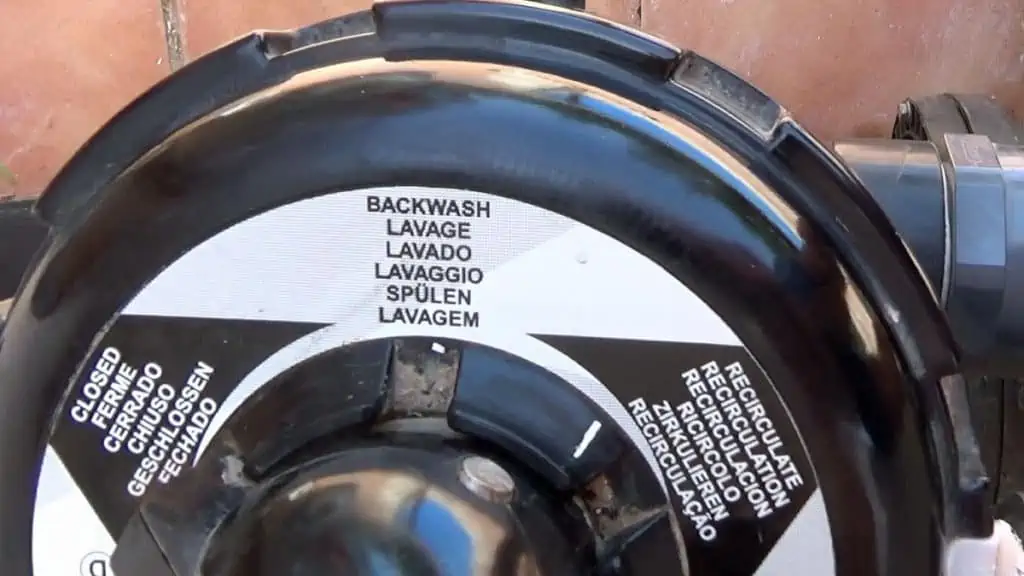
Push the handle down to release the bottom from its current position. Twist it to the backwash position, then lower the lever to lock it in place.
It doesn’t matter whether you turn the valve clockwise or anticlockwise.
5 – Switch on the pump
6 – Watch the sight glass observation tube

Keep an eye on the water passing through the sight glass observation tube.
Initially, it will probably be very cloudy with particles of dirt in it. After a few minutes, it will start to clear. When it does run clear, go on to step 7.
7 – Switch off the pump
8 – Set multiport valve to Rinse
After you backwash for a few minutes, the sand in the filter will be quite loose. So turn the multiport valve to rinse as the rinse cycle will settle the sand back down.
9 – Switch on the pump
Run the pump for 30 seconds to one minute. This will help settle the sand and filter it properly. Then, switch off the pump.
10 – Set multiport valve to Filter
You are almost finished, so ensure the pump is off and set the lever to the filter position.
11 – Switch on the pool pump
You can run the pump for a while or set it on a timer setting so it comes on later. I would normally let it run for a while, as this is the stage where I would normally test the water and add any necessary chemicals.
Once you add chemicals, you should run the pump to circulate them around the pool; otherwise, you will build up very strong chemicals in one spot.
12 – Check the pressure gauge
Check that the pressure gauge on the filter is now showing a normal operating filter pressure (the dial pointing to the green sector on the dial).
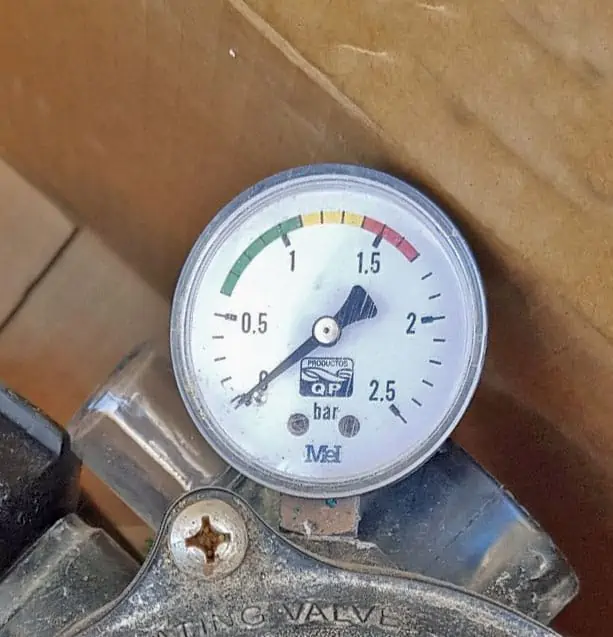
If the dial shows little or no pressure, this is because there is an airlock somewhere in the system.
Let the pump run for a few more minutes. The airlock will probably dissipate by itself, and the pressure will rise.
If the pump’s airlock still doesn’t clear quickly, you must bleed the air out. Read: How to bleed the air from a pool pump and filter.
13 – Roll up the backwash hose if you have one
14 – Go and have a well-earned rest!
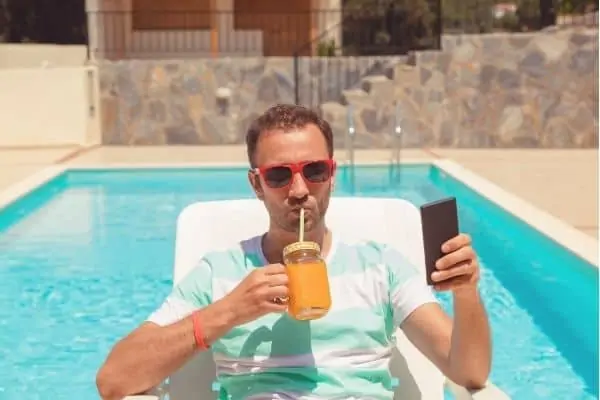
Why do you need to backwash a sand filter?
There are three main reasons you may need to backwash the pool sand filter:
- The pressure gauge’s pressure (generally located on top of the sand filter housing) shows a higher back pressure than normal. This is often represented with a red quadrant on the gauge. This occurs because the sand becomes blocked by the debris collected in the filter, which slows the water flow and increases the back pressure.
- When vacuuming, you notice that you do not have very high suction, making picking up the particles on the bottom of the pool difficult. This also occurs because the sand becomes blocked by the debris collected in the filter.
- You just vacuumed the pool, which was particularly dirty. It is good practice to do this as part of your regular cleaning routine.
What does backwashing a pool do?
When you backwash a sand filter system, you reverse the pool water flow through the pool filter sand.
When on the filter setting, water passes through the sand from the top, trapping debris in the sand as it flows through and then returns to the pool as filtered water.
But on the backwash setting, the water passes through the filter from the bottom rather than from the top and dislodges all the dirt particles lodged in the filter sand to restore optimum filtration. Depending on the setup, The dirt is expelled to the sewer or the yard/garden.
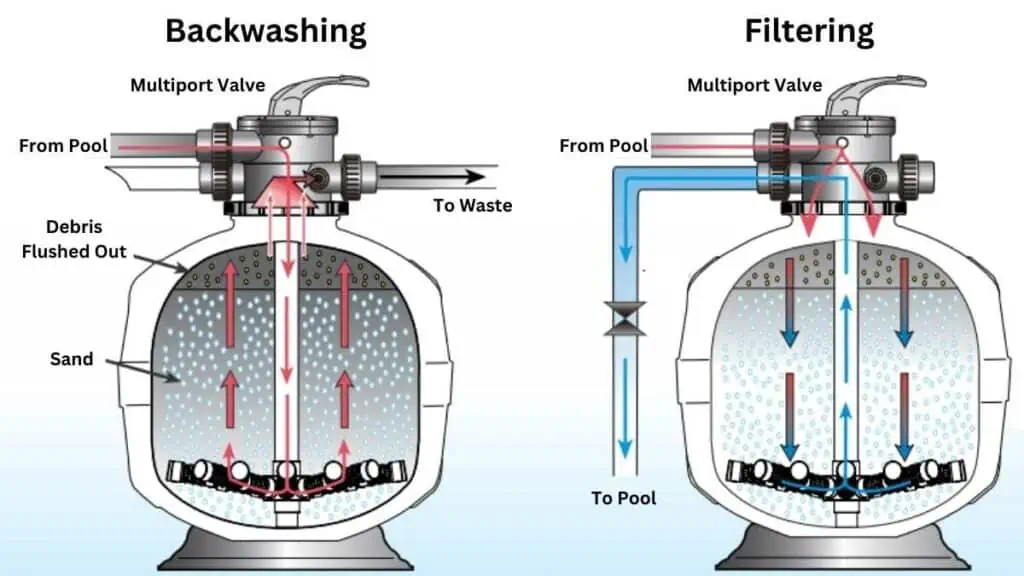
How often should you backwash pool filter?
There are some differing opinions about how often should you backwash a pool. Some say you should only do it when it is essential (as in the situations in the section above), others say you should backwash every week as part of your regular weekly pool maintenance. In contrast, others believe you should do it whenever you vacuum your pool.
Indeed, the amount of use the pool gets will affect the frequency of cleaning and, therefore, the frequency of backwashing. When it is just my wife and me here, perhaps swimming only once or twice a week, I may go between cleaning and backwashing for two weeks. If we have a young family staying and it gets used every day, I may need to clean and backwash every few days.
It depends, too, whether you have a sand filter or a DE (diatomaceous earth) filter. DE filters should be backwashed less often than sand filters, perhaps as little as every 4-5 weeks.
How long do you backwash a pool for?

Most sand filter setups include a small glass inspection tube to see the dirt coming out of the filter system and flowing down the waste pipe. I watch this while the filter is on backwash and turn the pump off when the water is running clear.
This normally takes between 1 minute and 3 minutes, depending on how dirty the filter is.
Do you rinse after backwashing a pool?
Once I have turned the pump off, I always turn the multiport valve to Rinse and rerun the pump for 30 seconds to a minute. The reason for doing this is two-fold:
- It removes any remaining dirt and dust in the filter sand
- It helps to resettle the sand filter material in the filter housing, leaving it ready to begin filtering again
Running the filter on rinse also sends the water down the filter’s waste port, so if you have a backwash valve on this pipe, you must leave it open until rinsing is finished.
Can you backwash while vacuuming?
While vacuuming, you may notice a loss of suction as dirt on the bottom becomes more difficult to pick up. This can happen, particularly if the pool is dirty, as the filter may become blocked, which builds up back pressure, reduces suction and lowers the sand filter’s efficiency.
If this happens, you can backwash without having to disconnect the vacuum hose, etc., but of course, you will have to stop vacuuming while you are going through the backwash process above.
Should I backwash after shocking pool?
Generally speaking, this wouldn’t be sensible as you would be flushing some chlorine shock straight to waste. It would be much better to backwash, rinse and then shock your pool.
Do all pools need to be backwashed?
Both pools with sand filters and DE (diatomaceous earth) filters need to be backwashed, although DE filters less often (see the section on how often you should backwash above).
Can you backwash a cartridge filter? Cartridge filters are not built to allow backward water flow so you cannot backwash. You have to remove the cartridge filter and clean it manually.
Can you vacuum pool on backwash?
You cannot vacuum a pool when the multiport valve is in the backwash setting. This is because the water flow is reversed with the water from the pool (or the vacuum hose if it is connected) going from the bottom of the sand filter to the top and then into the waste pipework.
Any dirt you pick up while vacuuming is likely to get trapped in the sand at the bottom of the filter. When you finish and put the system into the filter cycle, much of the dirt will be sent into the pool. Refer to the how-to-backwash-a-pool guide above.
See Can you vacuum a pool on backwash for a full explanation.
Do you lose water when you backwash?
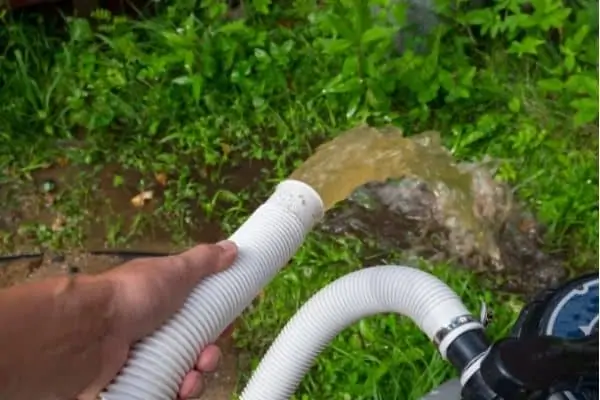
Yes, you do lose pool water when you backwash, as the backwash water does not recirculate into the pool but is instead sent to the waste line and into the sewer or the yard/garden.
This isn’t normally a problem since you are only likely to backwash for 1-3 minutes, so the water loss will not be significant.
Some pool systems exit the waste water directly into the sewerage system, so you don’t have to worry about it.
Other systems do not; the pool water is expelled from a waste line. Often, a flexible pool backwash hose can be rolled out. The end can be positioned in a part of the garden where you want the waste water to flow (and move it around too to distribute the water). Alternatively, the pipe can be positioned in a drain so the water flows away.
Some pool owners position the backwash hose so the dirty water runs into the road by their property. Before doing this, I suggest you check with your local authority to ensure this is prohibited.
When you are just backwashing or even vacuuming on waste, the amount of water doesn’t normally cause a problem if it flows into the garden.
If you are emptying the pool, which would be pumped out into the waste system using the waste setting, then the sheer volume can cause problems. In this case, emptying the pool in stages may be better to allow the water time to soak in and distribute.
Read my post Where does backwash pool water go?
Can I backwash my pool onto my lawn?
If the chlorine level in pool water is fairly high, it could damage the grass. Low levels of chlorine will not damage lawns. After all, when you use a sprinkler on the lawn directly from your water supply, it normally contains low levels of chlorine that do not damage a lawn.
Ideally, you should run the backwash water into an area of the garden that will allow the chlorinated water to leach down through the soil.
If you have a salt water pool, this should have less effect on the lawn unless you plan to empty the pool, which may affect the lawn.
Summary
Knowing how to backwash a swimming pool is an essential maintenance skill. It ensures your pool remains clean, hygienic, and safe. Regularly backwashing your sand filter will enhance its efficiency and prolong its lifespan, saving you time and money in the long run.
So, if you want to keep your pool water crystal clear and inviting, remember to include backwashing in your routine pool maintenance.
Frequently Asked Questions
Why is dirt coming out of my pool jets?
This is likely because the sand pool filter requires cleaning or backwashing as it has too much dirt and debris. You would backwash it if it is a sand filter or remove and clean it if it is a cartridge filter.
Why is my pool filter pressure gauge reading zero?
This could be because the gauge is faulty. But most likely, it is because you have an airlock in the system, so no water passes through the filter. Try loosening the valve atop the filter to let any trapped air out.
How often do you backwash a saltwater pool?
Regarding backwashing, a saltwater pool with a sand filter is no different from a freshwater pool with a sand filter. Therefore, it should be treated the same way and backwashed as shown above.
What happens if you don’t backwash your pool?
Suppose you do not backwash your sand pool filters regularly. In that case, the filter will become increasingly clogged with debris, leading to increased back pressure, lack of suction in the skimmers and much-reduced filtering of your pool’s water.


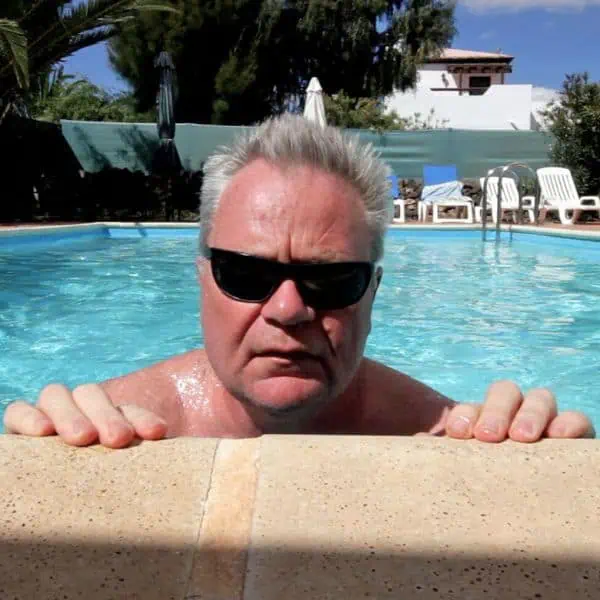



Leave a Reply